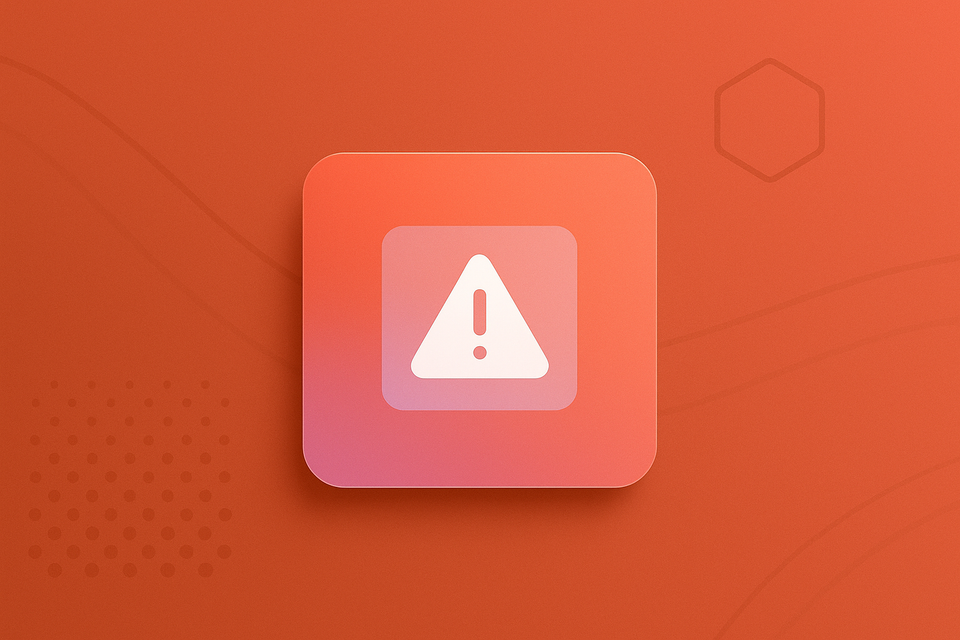Why Good Infrastructure Processes Still Break Production

You've built a solid Infrastructure as Code foundation. Terraform manages your multi-cloud infrastructure across AWS, GCP, and Cloudflare. You've got GitOps workflows with ArgoCD handling Kubernetes deployments. Your team uses infrastructure-as-code best practices, maintains monorepos per provider, and even has policy checks in place.
But something's still broken.
Despite following all the proper practices, your infrastructure workflows are bleeding time, frustrating developers, and causing preventable outages. You're paying a hidden tax on "good enough" processes that look right on paper but fail in practice.
The Drift Problem That Never Goes Away
Here's a scenario that plays out weekly: A product developer needs an S3 bucket for a quick feature test. Instead of following the proper Terraform workflow, they navigate the AWS console and create it manually.
Three weeks later, Terraform wants to delete resources during a routine apply. The bucket isn't in the state. No one remembers who created it or why it was created.
Now, someone has to spend hours playing infrastructure archaeology, tracking down stakeholders, and figuring out if it's safe to remove.
This isn't a people problem. It's a process problem.
When your infrastructure workflow has more friction than the AWS console, people will route around it. Every manual change introduces drift. Every drift introduces risk. Every risk eventually becomes an incident.
The real cost isn't the S3 bucket; it's the compound effect of dozens of these minor deviations accumulating over time.
The Atlantis Trap
Many teams adopt Atlantis, believing it will resolve their Terraform workflow issues. In theory, it's excellent: automated plans, PR-based workflows, and collaborative reviews.
In practice, it creates new bottlenecks:
The Comment Dance
Developers must remember the exact sequence: comment to init, comment to plan, comment to apply, and then merge. Miss a step? The deployment fails silently or applies incorrectly.
Slow Feedback Loops: Plans take forever to implement. Applying takes even longer. Developers lose context waiting for infrastructure changes that should be fast.
The Knowledge Gap: Product teams creating cloud infrastructure often lack an understanding of the implications of their changes. They rename a load balancer, thinking it's a simple update, but fail to realize that Terraform will destroy the old one and create a new one, taking down the service.
Workflow Mismatch: The Atlantis model (plan → apply → merge) doesn't match how developers work. They want to merge after approval rather than coordinating infrastructure changes with code changes in a specific sequence.
When Security Becomes Friction
After a bad month of outages, leadership institutes new rules: every infrastructure PR now requires three reviewers. The thinking is sound; more eyes catch more problems, but the cure becomes worse than the disease.
Self-service infrastructure dies. Developers start viewing infrastructure changes as bureaucratic overhead rather than as a means of enablement. Policy checks help reduce incidents, but add so much friction that developer sentiment turns negative.
You've traded velocity for safety, but you haven't solved the underlying problem.
The issues that caused the outages, knowledge gaps, poor change visibility, and manual drift remain. You've just wrapped them in more process.
The "Always a Project" Problem
Infrastructure improvements become a perpetual background task. Every quarter, there's a new initiative to "fix our IaC workflows." Teams evaluate new tools, implement new processes, and add new guardrails.
But the fundamental problems persist because they're treating symptoms, not causes:
- Slow feedback gets addressed with faster hardware, not better workflows
- Drift issues get solved with more monitoring, not prevention
- Knowledge gaps get filled with more documentation, not better interfaces
- Process friction gets reduced with more automation, not intelligent automation
The Shift-Left Mirage
"We need to shift left" becomes the rallying cry. Catch problems earlier. Review changes sooner. Add more checks upfront.
However, shifting left without intelligence merely relocates the bottleneck. Now, instead of slow deployments, you have slow reviews. Instead of production issues, you have PR conflicts. Instead of runtime errors, you have planning failures.
Shifting left only works if you're moving toward intelligence, not just earlier manual processes.
What Works
The teams that break out of this cycle share a common approach: they stop optimizing human processes and start building intelligent workflows.
Instead of asking, "How do we make humans better at reviewing infrastructure?" they ask, "How do we give humans the context they need to make confident decisions?"
Instead of "How do we prevent drift?" they ask, "How do we detect and explain drift automatically?"
Instead of "How do we reduce the cognitive load of infrastructure changes?" they ask, "How do we translate technical changes into business impact?"
The solution isn't better processes. It's contextual intelligence.
Beyond Process Optimization
Your infrastructure workflow problems aren't unique. Teams everywhere are fighting the same battles: drift, knowledge gaps, slow feedback, and process friction.
The companies that solve this first will have a massive advantage. While their competitors are stuck in review cycles and firefighting drift, they'll be shipping infrastructure changes with confidence.
The question isn't whether AI will transform infrastructure workflows; it's whether it will convert them effectively. It's whether you'll adopt it before your competitors do.
The hidden tax of "good enough" infrastructure workflows is compounding daily. Every manual workaround, every slow review cycle, and every preventable outage is costing you more than the price of fixing the underlying system.
It's time to stop optimizing broken processes and start building intelligent ones.





Comments ()